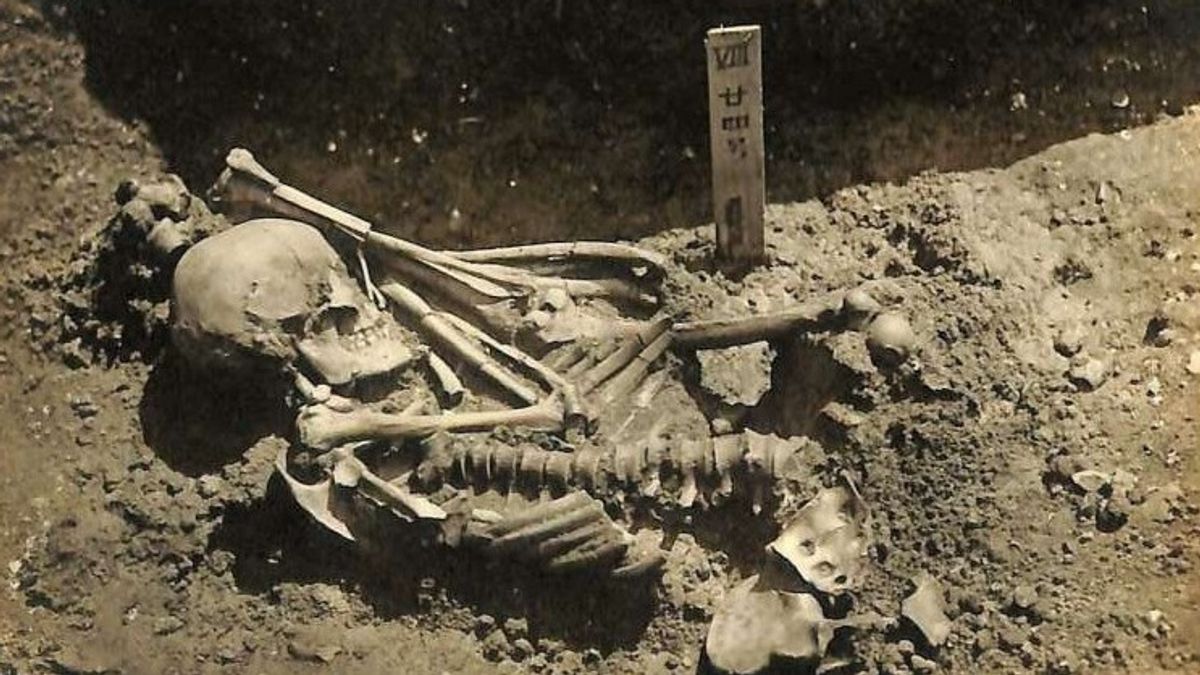JAKARTA - Recently, several researchers gathered in the University of Oxford team revealed their findings about the bones of a victim of a shark attack 3,000 years ago in the Seto Inland Sea, the Japanese archipelago. Shark attacks that occurred thousands of years ago left terrible scars scattered all over the victim's skeleton.
Research results from the Journal of Archaeological Science: Reports revealed that researchers from Oxford, namely J. Alyssa White and Professor Rick Schulting investigated the skeletal remains of prehistoric hunters at Kyoto University which were originally discovered and excavated from the burial ground of the archaeological site in Tsukumo, Okayama.
The Tsukumo site itself was discovered in 1860, and the first archaeological excavations were carried out in 1915. Since then, archaeologists have found more than 170 human remains buried there. But this time they found something different, namely a human skeleton that was seriously injured.
Due to the lack of archaeological cases caused by shark attacks, the research team from Oxford collaborated with an expert named George Burgess who is now Director Emeritus of the Florida Program for Shark research.
The team estimates that the person died more than 3,000 years ago, between 1370 BC and 1010 BC. Researchers carefully reconstructed what happened to the victim 3,000 years ago using a combination of archeology and forensic techniques by documenting 790 injuries to the victim's skeleton, such as cuts, stab wounds, blunt force fractures and intersecting internal injuries. Such wounds match those left by sharks. This makes it one of the earliest direct evidence for shark attacks on humans and is older than previously recorded, namely about victims of shark attacks 1,000 years ago.
"We were initially confused as to what could have caused at least 790 deep, jagged wounds to this man. The injuries were mainly confined to the arms, legs and front of the chest and abdomen." said researcher J. Alyssa White quoted from the University of Oxford article edition of June 24, 2021.
The researchers also scanned the bones with computed tomography (CT) X-rays and created a 3D model of the victim, named Tsukumo No. 24 so that they can visualize and map the injuries.

The result that can be seen is that all the ribs have been bitten and cracked. The wound was centered around the hip and left leg, suggesting that the victim may have lost his wrist while trying to defend himself. The long bones in the arms and legs show bites from multiple directions, suggesting that the shark was constantly circling and tearing its victims apart.

With such severe injuries, researchers concluded that the victim was unlikely to be alive after being attacked due to heavy blood loss. The results also show that the victim after death remained at sea for a period of time until his body was finally found and then buried by people who lived with him.
However, regarding the type of shark that attacked it, there are two possibilities, namely the tiger shark (Galeocerdo cuvier) and the great white shark (Carcharodon carcharias), as both are commonly found in the Seto Inland Sea of Japan near the location where the victim was attacked.
Still quoted from the University of Oxford article, Dr. Mark Hudson a researcher at the Max Planck Institute, Institute of Human History Science in Jena, Germany added, "The Japanese Neolithic people often exploited various marine resources. It is possible that victims deliberately targeted sharks by fishing. However, these findings not only provide a new perspective on Ancient Japan, but also a rare example of archaeologists being able to reconstruct dramatic episodes in the life of prehistoric communities."
The English, Chinese, Japanese, Arabic, and French versions are automatically generated by the AI. So there may still be inaccuracies in translating, please always see Indonesian as our main language. (system supported by DigitalSiber.id)













